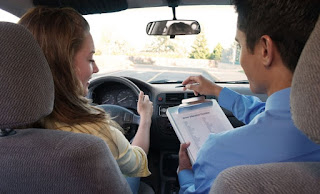The Most Overlooked Driving Mistakes That Increase Accident Risk
Most of us like to think we’re good drivers. We follow the speed limit, wear our seat-belts, and stay off our phones (most of the time). But even the most responsible drivers can fall into risky habits without realizing it. These seemingly harmless mistakes can increase your chances of an accident—sometimes dramatically.
Let’s take a closer look at some of the most overlooked driving mistakes that could be putting you and others in danger.
1. Rolling Through Stop Signs
It might feel harmless to slow down instead of coming to a full stop—especially when no one else seems to be around. But failing to fully stop at stop signs is a traffic violation and one of the most common causes of accidents at intersections. Rolling stops can result in collisions with oncoming traffic, cyclists, or pedestrians who assume you’re stopping.
Safe habit: Come to a complete stop, look both ways, and double-check for pedestrians and cyclists before proceeding.
2. Not Using Turn Signals
Forgetting—or neglecting—to use your turn signal is more than just bad etiquette. It’s a dangerous habit that causes confusion for other drivers and increases the risk of side-impact crashes or rear-end collisions.
Safe habit: Signal at least 100 feet before turning or changing lanes to give others time to react.
3. Driving in the Left Lane for Too Long
The left lane on highways is intended for passing, not cruising. Staying in the left lane can cause traffic buildup, road rage, and dangerous overtaking maneuvers by other drivers.
Safe habit: Pass vehicles when needed, then return to the right lane to allow faster-moving traffic through.
4. Not Checking Blind Spots
Your mirrors don’t catch everything. Failing to check blind spots when changing lanes or merging is a common mistake that leads to side-swipe accidents—especially on busy roads.
Safe habit: Always do a quick over-the-shoulder check before changing lanes, even if you think it’s clear.
5. Tailgating
Following too closely reduces your reaction time and increases the likelihood of a rear-end collision, especially in bad weather or sudden braking situations.
Safe habit: Keep at least a 3-second following distance behind the car in front of you. Increase this in rain, fog, or snow.
6. Assuming Other Drivers Will Follow the Rules
Defensive driving is about expecting the unexpected. Many accidents occur because one driver assumes another will yield, signal, or stop.
Safe habit: Always drive with caution and anticipate mistakes from other drivers. Never assume someone else will do the “right” thing.
7. Speeding Through Yellow Lights
Many drivers treat yellow lights as a signal to speed up, not slow down. But rushing through a yellow light often results in running a red light or colliding with cars already entering the intersection.
Safe habit: When you see a yellow light, slow down and prepare to stop—unless it’s unsafe to do so.
8. Driving While Distracted—Even Slightly
We all know texting and driving is dangerous, but even minor distractions like adjusting the radio, eating, or chatting with passengers can shift your focus long enough to cause a serious accident.
Safe habit: Stay fully focused on the road. Set up your music or navigation before driving, and avoid multitasking behind the wheel.
Final Thoughts
Driving mistakes don’t always involve dramatic, reckless behavior. Sometimes it’s the little things—the habits you don’t even notice—that put you at risk. By becoming more aware of these overlooked driving mistakes, you can protect yourself, your passengers, and everyone else on the road.



Comments
Post a Comment